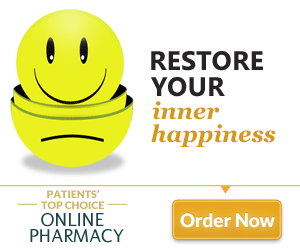Anxiolytics and sedatives are medications commonly used in mental health treatment to alleviate symptoms of anxiety, panic disorders, insomnia, and related conditions. They work by targeting the central nervous system to induce relaxation, calmness, and sedation.
Overview of Anxiolytics and Sedatives medications
Here’s an in-depth exploration of some of the commonly prescribed anxiolytics and sedatives, along with their pros and cons and we also show you the best place where to buy medicines online at a trusted online pharmacy for a guaranteed low price::
Benzodiazepines (Benzos):
Examples of Benzos:
- Alprazolam (Xanax)
- Lorazepam (Ativan)
- Diazepam (Valium)
Pros of Benzos:
- Rapid Onset: Provide quick relief for acute anxiety and panic symptoms.
- Muscle Relaxation: Help alleviate muscle tension and stiffness associated with anxiety.
- Sedative Effect: Aid in inducing sleep in individuals with anxiety-related insomnia.
Cons of Benzos:
- Risk of Dependency: Potential for addiction and tolerance with long-term use.
- Cognitive Impairment: May cause drowsiness, impaired coordination, or memory issues.
- Withdrawal Symptoms: Abrupt discontinuation can lead to rebound anxiety or withdrawal effects.

Non-Benzodiazepine Anxiolytics:
Examples of non-Benzos:
- Buspirone (Buspar)
- Hydroxyzine (Vistaril)
Pros of non-Benzos:
- Non-Sedating: Usually do not cause significant sedation or cognitive impairment.
- Lower Risk of Dependency: Have a lower potential for addiction compared to benzodiazepines.
- Minimal Withdrawal Effects: No significant withdrawal symptoms upon discontinuation.
Cons of non-Benzos:
- Delayed Onset: May take several weeks to reach full therapeutic effect.
- Less Potent: May not be as effective for severe or acute anxiety.
- Minimal Side Effects: Some individuals may experience mild dizziness or gastrointestinal issues.
Sedative-Hypnotics (Z-Drugs):
Examples of Z-Drugs:
- Zolpidem (Ambien)
- Eszopiclone (Lunesta)
- Zaleplon (Sonata)
Pros of Z-Drugs:
- Rapid Onset: Effective in inducing sleep and improving sleep continuity.
- Shorter Half-Life: Less residual sedation in the morning compared to benzodiazepines.
- Lower Risk of Dependency: Generally considered less habit-forming than benzodiazepines.
Cons of Z-Drugs:
- Cognitive Impairment: Potential for next-day drowsiness and impaired coordination.
- Risk of Dependency: Although lower than benzodiazepines, still pose a risk of dependence.
- Withdrawal Effects: Abrupt discontinuation may lead to rebound insomnia or withdrawal symptoms.
Antihistamines (Off-Label Sedative Use):
Examples of antihistamine medications:
- Diphenhydramine (Benadryl)
- Doxylamine (Unisom)
Pros of Antihistamines:
- Availability: Over-the-counter and accessible for mild sleep difficulties.
- Sedative Effect: Induce drowsiness and aid in sleep initiation.
Cons of Antihistamines:
- Anticholinergic Effects: Dry mouth, constipation, and blurred vision.
- Cognitive Impairment: Drowsiness and potential daytime sedation.
- Tolerance Development: Reduced effectiveness with continued use.
Conclusion:
Anxiolytics and sedatives are essential in managing symptoms of anxiety, panic disorders, and insomnia, offering rapid relief and improved sleep. However, their use should be approached cautiously due to the potential for dependency, cognitive impairment, and other adverse effects associated with long-term use. Benzodiazepines, while effective, carry a higher risk of dependence, whereas non-benzodiazepine alternatives like buspirone or sedative-hypnotics offer some advantages with reduced dependency potential.
The choice of medication should be made in consultation with a healthcare professional, considering the severity of symptoms, the risk-benefit ratio, and individual factors. Additionally, non-pharmacological approaches, such as therapy, relaxation techniques, and lifestyle modifications, often complement medication use in the management of anxiety-related conditions, reducing the reliance on sedatives and anxiolytics while optimizing overall mental health outcomes.